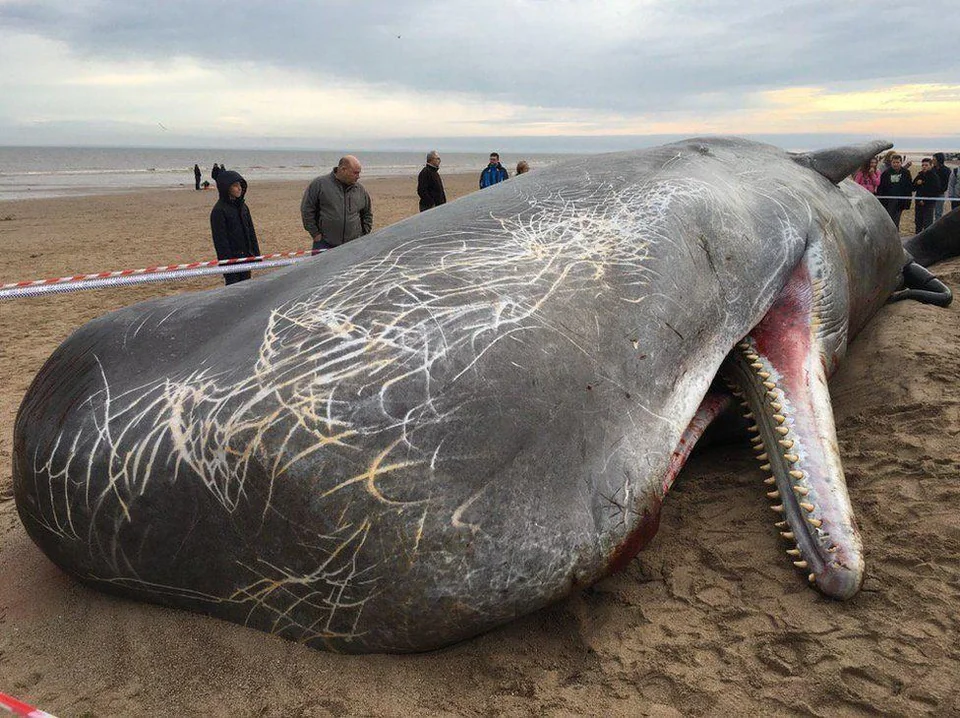The largest predator on planet earth, the Sperm whale. This whale that has washed up on a beach in the UK, has scars on his head from battles against Giant squid. The hunt takes place at such great depths, it has never been filmed or witnessed by Humans.
Sailors and fishermen the world over have told strange stories about giant squids, largest of the invertebrates (animals without backbones). It seems difficult to believe that fear, wonder, and confusion are expressed in describing an animal related to the lowly and harmless clam and snail, but exaggerated sea-monster stories are no more fascinating than the true facts. You must understand, first of all, that because squids are deep-sea dwellers much about them remains a mystery – their greatest length, their color, food, and life-span, the depth at which they live, their young, and other details.
Information is obtained by studying small squids and dead squids that are washed ashore. The squid resembles nothing else! It has a head joined to a soft, rubbery body by a narrow neck that is covered with a coat-like mantle attached to the back. On each side of its head is an eye about the size of a dinner plate, an eye that impresses you as being keen, cold, and intelligent. The squid’s foot is joined to its head, giving the animal its classification as a cephalopod (head-footed animal). Actually, it is a foot in name only; for in appearance it is divided into ten huge, twining, sucker-covered arms that can be thirty-five feet in length. Two longer arms shoot out to seize a victim and bring it back to be held by the eight shorter arms.
The prey is then torn apart by the squid’s beak-like mouth and often chopped up by its thin tongue, which is covered with hundreds of little hook-like teeth. The squid has a most unusual method of traveling quickly. For speed, it does not swim, crawl, or walk but moves in a manner described as jet propulsion
. Water is taken in through a slit-opening encircling the head and then forced out through an organ, under the head, called the siphon. If the movable siphon is facing forward when the stream of water shoots out, the squid, surprisingly, darts backward. If the siphon is turned slightly, the squid moves to the side; and when the siphon is bent backward, this animal shoots forward. The siphon is also used to discharge an inky fluid that spreads in the water for a great distance. The black liquid aids both the squid and man. It is a protection for the squid, and it provides man with the source of sepia used in commerce and the arts.
Aside from man, the squid’s greatest enemy is the sperm whale. Great and strong as it is, the squid seems to be no match for the whale with its large and heavy teeth. Scar marks made on the skin of whales by the squid’s suckers and fragments of squids found in the stomachs of captured whales are evidences of battles between these two powerful creatures.






